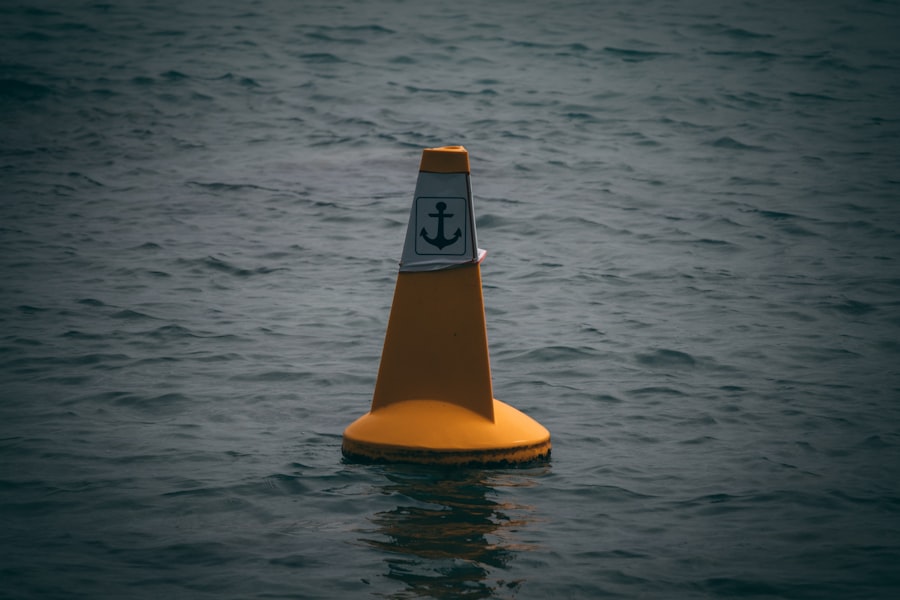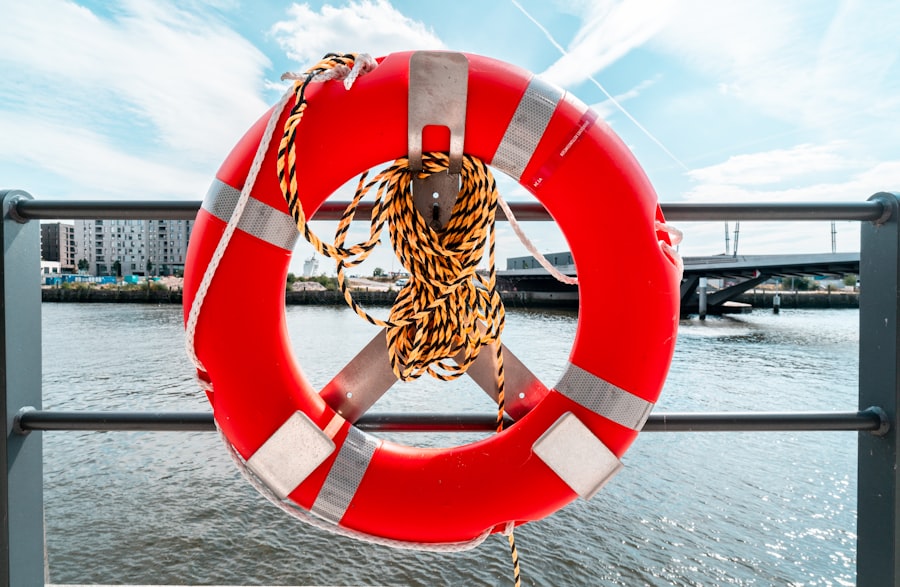In June 2017, the world witnessed a significant cyberattack that would come to be known as the NotPetya malware incident. Initially perceived as a ransomware attack, it quickly became evident that NotPetya was far more destructive in nature. Unlike traditional ransomware, which typically seeks to extort money from victims, NotPetya was designed to cause chaos and disruption.
Its primary target was Ukraine, but its reach extended globally, affecting numerous industries and organizations. The malware exploited vulnerabilities in widely used software, spreading rapidly across networks and crippling systems in its wake. The incident served as a stark reminder of the vulnerabilities inherent in modern digital infrastructures and the potential for cyber warfare to disrupt critical services.
The ramifications of the NotPetya attack were profound, highlighting the interconnectedness of global supply chains and the potential for cyber threats to transcend geographical boundaries. As organizations scrambled to contain the damage, it became clear that the maritime industry was particularly vulnerable. With its reliance on digital systems for navigation, communication, and logistics, the maritime sector faced unprecedented challenges in the wake of the attack.
Key Takeaways
- NotPetya malware is a destructive cyberattack that caused widespread disruption across various industries, including the maritime sector.
- The maritime industry experienced significant operational disruptions due to the NotPetya malware attack, leading to port closures and delays in shipping operations.
- Shipping companies suffered financial losses and reputational damage as a result of the NotPetya malware attack, highlighting the need for robust cybersecurity measures.
- The NotPetya malware attack exposed cybersecurity vulnerabilities in the maritime industry, emphasizing the importance of implementing strong security protocols and regular risk assessments.
- The economic consequences of the NotPetya malware attack underscore the need for proactive response and recovery efforts, as well as regulatory changes to enhance cybersecurity in the maritime sector.
NotPetya Malware’s Attack on the Maritime Industry
The maritime industry, a cornerstone of global trade, found itself in the crosshairs of the NotPetya malware attack. Major shipping companies and port operators were caught off guard as their systems became infected, leading to widespread disruptions. The malware’s ability to propagate through networks meant that once it infiltrated a single system, it could quickly spread to others, creating a domino effect that paralyzed operations.
The attack underscored the industry’s reliance on interconnected digital systems, which, while enhancing efficiency, also introduced significant vulnerabilities. One of the most notable victims of the NotPetya attack was Maersk, one of the largest shipping companies in the world. The malware crippled Maersk’s operations across multiple continents, forcing the company to revert to manual processes and causing delays in shipping schedules.
The incident highlighted how a single cyber event could have cascading effects throughout the global supply chain, affecting not only the targeted company but also its partners and customers. As the maritime industry grappled with the fallout from NotPetya, it became evident that cybersecurity had to be prioritized to safeguard against future threats.
Disruption of Port Operations

The impact of NotPetya on port operations was immediate and severe. Ports are critical nodes in global trade, facilitating the movement of goods across borders. When NotPetya struck, many ports experienced significant disruptions as their operational systems were rendered inoperable.
This included everything from cargo tracking systems to communication networks essential for coordinating vessel movements. The chaos that ensued not only delayed shipments but also created bottlenecks that rippled through supply chains worldwide. In addition to operational disruptions, ports faced challenges in managing their workforce during the attack.
With systems down, many employees were left without clear guidance on how to proceed, leading to confusion and inefficiencies. The inability to access real-time data hampered decision-making processes, further exacerbating delays. As port authorities scrambled to restore normal operations, it became clear that the incident had exposed critical vulnerabilities in their cybersecurity frameworks.
The need for robust contingency plans and improved cybersecurity measures became paramount as stakeholders recognized that such attacks could become more frequent in an increasingly digital world.
Impact on Shipping Companies
| Metrics | Impact on Shipping Companies |
|---|---|
| Shipping Volume | Decreased due to global economic slowdown |
| Shipping Costs | Increased due to higher fuel prices and supply chain disruptions |
| Port Congestion | Causing delays in shipping schedules and increased operational costs |
| Regulatory Changes | Impacting compliance costs and operational procedures |
The ramifications of NotPetya extended beyond immediate operational disruptions; they also had long-term implications for shipping companies. The financial toll was staggering, with estimates suggesting that Maersk alone incurred losses exceeding $300 million due to the attack. These losses stemmed not only from halted operations but also from the costs associated with recovery efforts and system restorations.
For many shipping companies, the incident served as a wake-up call regarding their cybersecurity posture and the need for proactive measures to mitigate risks. Moreover, the attack prompted shipping companies to reevaluate their relationships with technology providers and third-party vendors. Many organizations realized that their cybersecurity vulnerabilities were often linked to external partners who had access to their systems.
This led to increased scrutiny of vendor security practices and a push for more stringent cybersecurity requirements in contracts. As shipping companies sought to rebuild trust with customers and stakeholders, they recognized that investing in cybersecurity was no longer optional but essential for maintaining competitiveness in a rapidly evolving landscape.
Cybersecurity Vulnerabilities in the Maritime Industry
The NotPetya incident laid bare the cybersecurity vulnerabilities that permeate the maritime industry. Many organizations within this sector had historically underinvested in cybersecurity measures, viewing them as an unnecessary expense rather than a critical component of operational resilience. This oversight became glaringly apparent as systems were compromised and operations ground to a halt during the attack.
The reliance on outdated software and insufficient security protocols left many organizations exposed to threats that could have been mitigated with proper safeguards.
With numerous stakeholders involved—from shipping companies to port operators and logistics providers—ensuring consistent cybersecurity practices across all entities is challenging.
The interconnected nature of these relationships means that a weakness in one area can have far-reaching consequences for others. As organizations began to assess their cybersecurity frameworks post-NotPetya, it became clear that collaboration and information sharing among industry players would be essential for building a more resilient maritime sector.
Economic Consequences of NotPetya Malware

The economic consequences of the NotPetya malware attack were felt across multiple sectors, with the maritime industry being one of the hardest hit. The immediate financial losses incurred by companies like Maersk were staggering, but the broader economic impact extended beyond individual organizations. Disruptions in shipping and port operations led to delays in deliveries, which in turn affected businesses reliant on timely shipments for their operations.
This created a ripple effect throughout global supply chains, resulting in increased costs and lost revenue for countless companies. In addition to direct financial losses, the incident raised concerns about long-term economic implications for the maritime industry as a whole. As companies grappled with recovery efforts and sought to bolster their cybersecurity measures, many faced increased operational costs that could ultimately be passed on to consumers.
Furthermore, the reputational damage inflicted by such a high-profile cyberattack could deter potential customers from engaging with affected companies, leading to decreased market share and diminished competitiveness in an already challenging economic landscape.
Response and Recovery Efforts in the Maritime Industry
In the aftermath of the NotPetya attack, maritime organizations faced an urgent need to respond and recover from the unprecedented disruption. Many companies quickly mobilized teams to assess damage, restore systems, and implement contingency plans aimed at minimizing further impact. This often involved reverting to manual processes while IT teams worked tirelessly to restore digital infrastructure.
The speed at which organizations responded varied significantly based on their pre-existing cybersecurity measures and incident response protocols. Recovery efforts also necessitated collaboration among industry stakeholders. Shipping companies, port authorities, and technology providers came together to share information about vulnerabilities and best practices for recovery.
This collaborative approach not only facilitated faster restoration of services but also fostered a sense of community within an industry grappling with shared challenges. As organizations began to emerge from the crisis, they recognized that building resilience against future cyber threats would require ongoing cooperation and investment in cybersecurity initiatives.
Lessons Learned from NotPetya Malware Attack
The NotPetya malware incident provided several critical lessons for the maritime industry regarding cybersecurity preparedness and resilience. One of the most significant takeaways was the importance of proactive risk management strategies. Organizations learned that relying solely on reactive measures was insufficient; instead, they needed to adopt a holistic approach that included regular assessments of vulnerabilities, employee training programs, and robust incident response plans.
Additionally, the attack underscored the necessity of fostering a culture of cybersecurity awareness within organizations. Employees at all levels must understand their role in safeguarding digital assets and be equipped with knowledge about potential threats. By prioritizing cybersecurity education and training, organizations can empower their workforce to recognize suspicious activities and respond effectively to incidents before they escalate into larger crises.
Regulatory Changes in the Maritime Industry
In response to the NotPetya attack and its far-reaching consequences, regulatory bodies began reevaluating existing frameworks governing cybersecurity within the maritime industry. Recognizing that cyber threats posed significant risks to national security and economic stability, regulators sought to establish more stringent requirements for organizations operating within this sector. This included mandating regular cybersecurity assessments, incident reporting protocols, and compliance with industry standards designed to enhance overall resilience.
Moreover, regulatory changes prompted greater collaboration between government agencies and private sector stakeholders. Initiatives aimed at sharing threat intelligence and best practices became increasingly common as organizations recognized that collective action was essential for addressing shared vulnerabilities. By fostering partnerships between public and private entities, regulators aimed to create a more secure maritime environment capable of withstanding future cyber threats.
Future Threats and Preparedness in the Maritime Sector
As technology continues to evolve, so too do the threats facing the maritime industry. Cybercriminals are becoming increasingly sophisticated in their tactics, employing advanced techniques such as artificial intelligence and machine learning to exploit vulnerabilities within digital systems. The rise of interconnected devices—often referred to as the Internet of Things (IoT)—further complicates matters by expanding potential entry points for cyberattacks.
To prepare for these emerging threats, organizations within the maritime sector must prioritize ongoing investment in cybersecurity measures. This includes adopting advanced technologies such as threat detection systems powered by artificial intelligence, conducting regular penetration testing exercises, and fostering a culture of continuous improvement regarding cybersecurity practices. By remaining vigilant and proactive in their approach to cybersecurity, maritime organizations can better position themselves to navigate an increasingly complex threat landscape.
Conclusion and Recommendations for Maritime Industry Cybersecurity
The NotPetya malware incident served as a wake-up call for the maritime industry, highlighting critical vulnerabilities within its digital infrastructure and underscoring the need for robust cybersecurity measures. As organizations continue to recover from this unprecedented attack, it is imperative that they prioritize cybersecurity as an integral component of their operational strategies. To enhance resilience against future cyber threats, maritime organizations should consider implementing comprehensive risk management frameworks that encompass regular assessments of vulnerabilities, employee training programs focused on cybersecurity awareness, and collaboration with industry peers and regulatory bodies.
By fostering a culture of security consciousness and investing in advanced technologies designed to detect and mitigate threats proactively, organizations can better safeguard their operations against evolving cyber risks. In conclusion, while the challenges posed by cyber threats are significant, they are not insurmountable. By learning from past incidents like NotPetya and taking proactive steps toward enhancing cybersecurity measures, the maritime industry can build a more secure future—one where digital transformation does not come at the expense of safety or operational integrity.
The NotPetya malware attack had a significant impact on various industries, including the maritime sector, where it disrupted operations and caused substantial financial losses. A related article that delves into the broader implications of such cyber threats on critical infrastructure can be found on the In The War Room website. This article provides insights into how the maritime industry, among others, can bolster its defenses against similar cyber threats in the future. For more detailed information, you can read the full article by visiting In The War Room.
🔍WATCH THIS! The Secret Weakness That Will Break The US Military🧭
FAQs
What is the notpetya malware?
The notpetya malware is a type of ransomware that first emerged in 2017. It is designed to infect and encrypt files on a computer system, rendering them inaccessible until a ransom is paid.
What impact did the notpetya malware have on the maritime industry?
The notpetya malware had a significant impact on the maritime industry, causing disruptions to shipping and logistics operations. Several major shipping companies and ports reported being affected by the malware, leading to delays and financial losses.
How did the maritime industry respond to the notpetya malware attack?
In response to the notpetya malware attack, the maritime industry implemented enhanced cybersecurity measures to protect against future threats. This included improving network security, conducting regular security audits, and increasing employee training on cybersecurity best practices.
What lessons were learned from the notpetya malware attack in the maritime industry?
The notpetya malware attack highlighted the vulnerability of the maritime industry to cyber threats and the importance of robust cybersecurity measures. It also underscored the need for greater collaboration and information sharing within the industry to mitigate the impact of future cyber attacks.




